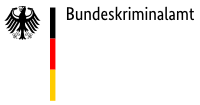A wide array of important and useful data for public authorities, companies, educational institutions, journalists and the general public is provided by EUROSTAT, the Statistical Office of the European Union. EUROSTAT is intended to serve as a high-quality statistical information service for the European Union.
To participate actively in the democratic life of Europe, all players need high-quality, impartial, reliable and comparable statistical data. The data must be accessible without limitations, in other words: Key information must not be withheld from individual citizens, companies and public entities; such players should, in fact, have equal access to the data available. By making the data freely accessible on the EUROSTAT website, EUROSTAT and its partners in the European Statistical System (ESS) offer equal access to a broad range of comprehensive information on the development of society, economy and environment in Europe. International statistics are also a means of getting to know the neighbours in other member states as well as countries outside the EU. They are significant indicators which demonstrate in an objective and realistic manner how people live and also, often, "where the shoe pinches". In this context, EUROSTAT draws up European statistics on a great variety of topics that facilitate comparisons between countries and regions. This also includes statistics on crime in the EU member states, some of which also contain information regarding victims.
Moreover, EUROSTAT plays an important role in the harmonisation of statistical definitions and computational methods, for example through initiatives for the harmonisation of international crime statistics.
The data can be accessed via the website https://ec.europa.eu/eurostat/de/web/crime/overview or via the portal https://www.destatis.de/Europa/DE/Startseite.html of the Federal Statistical Office (select: headings Bevölkerung, Arbeit und Soziales" -> "Daten" -> "Kriminalität und Strafverfolgung").
Depending on their needs, users have several possibilities to access the data: Interested members of the public can find compressed tables or graphics and maps. Specialists can retrieve complex data records from individual databases (user-defined excerpts). More than 300 million data can be viewed. The information is arranged by topics and specialist fields.
Via links, specialists can also obtain detailed information on the methodology applied. The databases are updated on a daily basis.
